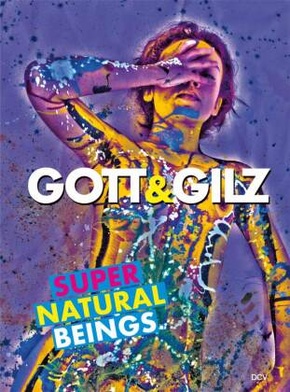| Verlag | DCV Dr. Cantzsche |
| Auflage | 2024 |
| Seiten | 202 |
| Format | 24,5 x 2,0 x 34,0 cm |
| Gewicht | 1537 g |
| ISBN-10 | 396912185X |
| ISBN-13 | 9783969121856 |
| Bestell-Nr | 96912185A |
GOTT&GILZ hüllen provokante Nacktheit in das Gewand kunsthistorischer KlassikerDer weibliche Akt ist eine Konstante der Kunstgeschichte, an der wir den Wandel von Darstellungsformen und das Schlingern der Moral ablesen können. Manche Akte landen zunächst in der Schmuddelecke, einige Jahre später sind sie dann schön und schicklich und werden in heiligen Hallen gezeigt (andersrum ist auch möglich). GOTT&GILZ reihen sich mit ihren Foto-Malereien in diese lange Tradition der Darstellung nackter Frauen durch Männer ein - Stichwort "male gaze" - und machen das mit ihren Verweisen auf Klimt, Schiele, Pollock u. a. auch noch explizit. Das führt bei manchen zu reflexhafter Empörung. Die Anmaßung besteht bei GOTT&GILZ jedoch anders als bei den besagten kunsthistorischen Referenzen nicht im Bruch mit tradierten Darstellungsformen, sondern eben im Zitieren derselben: die Vergangenheit als Affront. Die Frauen auf den Bildern, aber auch die Künstler selbst stellen ihr Begehren souverän zur Scha u und stoßen uns so scham- und schonungslos auf die Verfasstheit unserer in der Geschichte ankernden Gesellschaft und Psyche.Freiheit ist das Schlüsselwort im uvre von GOTT&GILZ: die Freiheit, authentisch zu sein und sich ohne Scham auszudrücken. Ihr subtil provokatives Spiel mit ästhetischen Konventionen und Tabus bereichert nicht nur die Kunstszene, sondern entfacht auch wichtige Diskussionen über Geschlechterrollen, Körperbilder und das Recht auf sexuelle Selbstbestimmung.Indem sie sich nackt machen, führen sie uns vor, wie wir sind, anstatt uns zu zeigen, wie wir (angeblich) sein sollten. Was für eine Provokation!
The female nude is a constant of art history whose vicissitudes illustrate changing forms of representation and the wild swings of public morality. Many a nude was initially condemned as smut only to be reclassified a few years later as beautiful and becoming and inducted into the hallowed halls (the opposite has also happened). GOTT&GILZ's photographic paintings build on this long tradition of depictions of naked women by men-theirs is the proverbial "male gaze." It is a debt they are quick to acknowledge, with nods to Klimt, Schiele, Pollock, et al. No wonder some have responded to their work with kneejerk indignation. Unlike in those art-historical references, then, the impudence lies not in the shattering of traditional norms of representation but in quoting them: the past as affront. The women in the pictures as well as the artists themselves flaunt their desires, shamelessly and relentlessly confronting us with the historic roots of our social and psychological realities. By letting it all hang out, they allow us to see ourselves as we are instead of presenting a picture of what we (supposedly) should be like. The insolence of it!

